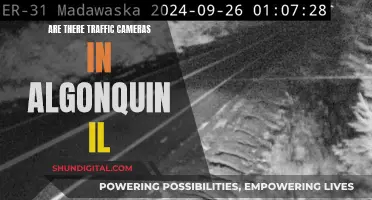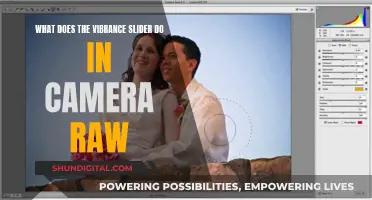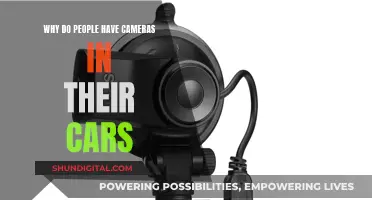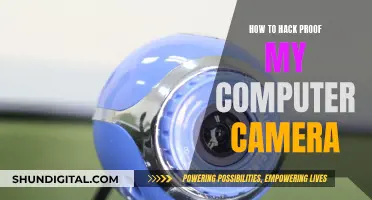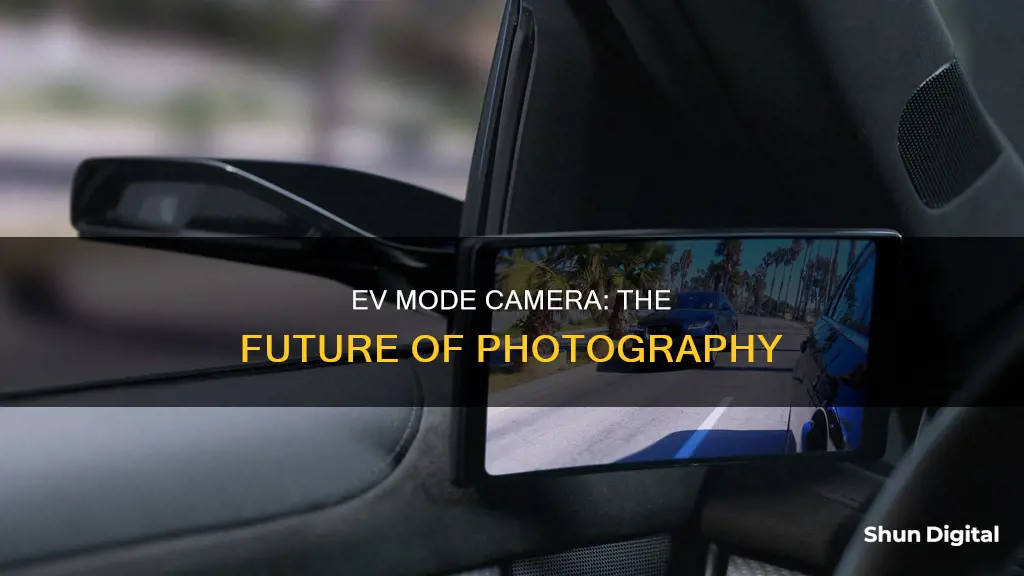
Exposure Value (EV) is a number that represents a combination of a camera's shutter speed and f-number. It is a way to combine shutter speed and aperture to a single value. Although shutter speed and aperture both carry a lot of side effects like motion blur and depth of field, EV only relates to exposure.
The EV concept was developed by the German shutter manufacturer Friedrich Deckel in the 1950s. Its intent was to simplify choosing among equivalent camera exposure settings by replacing combinations of shutter speed and f-number with a single number.
| Characteristics | Values |
|---|---|
| Purpose | To simplify choosing among equivalent camera exposure settings |
| Formula | N is your f-number, and t is your shutter speed |
| Scale | -6 to +17 |
| Calculation | Each increment of 1 in exposure value corresponds to a change of one "step" (or "stop") in exposure |
| Use case | Useful for beginners with a limited understanding of the effects of shutter speed and aperture and the relationship between them |
| Use case | Useful for experienced photographers who might choose a shutter speed to stop motion or an f-number for depth of field |
| Use case | Useful when using a handheld light meter |
| Use case | Useful when shooting long exposures with something like a 10-stop ND filter |
What You'll Learn

EV is a way to combine shutter speed and aperture into a single value
Exposure Value (EV) is a way to combine shutter speed and aperture into a single value. It represents how much light is in a scene and helps photographers determine the right settings for proper exposure. While the concept of EV originated in film photography, it remains relevant in the digital age, serving as the foundation for semi-automatic modes like Aperture Priority.
The formula for calculating EV involves the f-stop (N) and shutter speed (t), and it assumes a constant ISO of 100. Here's the formula: N + log2(t), where N represents the f-stop and t represents the shutter speed.
EV charts illustrate the various combinations of aperture and shutter speed that result in the same EV. These charts typically cover a range from -6 to +17, with higher values indicating brighter scenes and lower values indicating darker scenes. For instance, an EV of 16 represents a bright, sunny day, while an EV of -6 represents a night scene with minimal moonlight.
While modern cameras have made manual EV calculations less necessary, understanding EV is still crucial for grasping the relationship between aperture, shutter speed, and ISO. It also has practical applications, such as interpreting a camera's metering capabilities or understanding how neutral density (ND) filters affect exposure.
In conclusion, while EV may not be at the forefront of modern photography, it remains a valuable concept for photographers to understand, providing insight into exposure and the creative choices that affect the final image.
Troubleshooting Guide: Camera Battery Not Charging
You may want to see also

EV is used to indicate an interval on the photographic exposure scale
Exposure Value (EV) is a number that combines a camera's shutter speed and f-number (aperture). It represents the amount of light in a scene and indicates an interval on the photographic exposure scale. The higher the EV, the brighter the scene.
EV is calculated using the formula:
> EV = log2(N^2/t)
Where N is the f-number and t is the shutter speed in seconds.
The EV scale typically ranges from -6 to +17, with each increment of 1 in EV corresponding to a change of one "stop" in exposure. An EV of 0 corresponds to a shutter speed of 1 second and an aperture of f/1.0.
EV is useful for photographers to determine the appropriate camera settings for a given lighting situation. For example, a bright, midday scene would require a high EV like +15 or +16, while a darker subject like the Northern Lights would need a lower EV like -5 to avoid underexposure.
While modern cameras have made the practical use of EV less necessary, understanding EV is still important for understanding camera settings and the exposure triangle.
Finding Night Mode: Camera Settings Explored
You may want to see also

EV can be used to adjust the brightness of an image
Exposure Value (EV) is a way to adjust the brightness of an image by combining shutter speed and aperture to a single value. It is a numerical representation of the amount of light in a scene, informing photographers of the settings required for proper exposure. While EV is less commonly used in modern photography due to advancements in camera technology, it remains a valuable concept for understanding exposure and related settings.
The EV formula, N (f-stop) / t (shutter speed), allows photographers to calculate the required combination of f-stop and shutter speed to achieve the desired exposure. Different combinations of these settings can result in the same EV, providing flexibility in achieving the desired brightness for an image.
By understanding EV, photographers can make informed decisions about their camera settings. For example, a higher EV indicates a brighter scene, requiring less light to be captured through aperture and shutter speed settings. Conversely, a lower EV represents a darker scene, necessitating more light to be captured.
EV is particularly useful in situations where the camera's automatic metering may not produce accurate exposures. For instance, in snowy landscapes or night photography, the camera's meter may fail to capture the scene accurately, resulting in underexposed or overexposed images. By manually adjusting the EV, photographers can compensate for these metering inaccuracies and achieve the desired brightness in their images.
In addition to its direct impact on exposure, EV also plays a role in other camera functions. For example, it is used to describe the brightness of a scene, with higher EV values indicating brighter conditions. This information can be crucial in understanding the capabilities of a camera, such as its metering or autofocus performance in low-light conditions, which are often specified in terms of EV values.
Understanding Raw Camera Format for Photography
You may want to see also

EV can be used to adjust depth of field
In photography, EV (Exposure Value) is a number that represents a combination of a camera's shutter speed and f-number, with all combinations yielding the same exposure having the same EV. The EV concept was developed to simplify choosing between equivalent camera exposure settings by replacing combinations of shutter speed and f-number with a single number.
The f-number (relative aperture) determines the depth of field, and the shutter speed (exposure time) determines the amount of motion blur. The f-number is the ratio of the lens' focal length to the diameter of the entrance pupil. A wider aperture (such as f/1.4) will result in a shallower depth of field, allowing for a subject to stand out from an intentionally out-of-focus foreground or background (known as bokeh). Conversely, a smaller aperture will result in a deeper depth of field, increasing the sharpness of an image and keeping more of the image in focus.
The relationship between depth of field and aperture is as follows: a smaller aperture will increase depth of field, while a wider aperture will decrease it. This means that to adjust the depth of field in your images, you can use EV to change the aperture setting on your camera. By adopting an aperture priority or fully manual approach, you can give more weighting to the aperture and influence the depth of field.
It is worth noting that while EV can be used to adjust depth of field, it is not the only factor that affects it. The focal length of the lens and the distance between the camera and the subject will also impact the depth of field. Additionally, the hyperfocal distance (the distance at which a lens can be focused while maintaining acceptable sharpness in both the foreground and background) will also affect the depth of field.
Locking Camera Tricks: Maya Modeling Mode
You may want to see also

EV can be used to adjust motion blur
In photography, exposure value (EV) is a combination of a camera's shutter speed and f-number, with each combination yielding the same exposure having the same EV. The EV concept was developed to simplify choosing among equivalent camera exposure settings.
The f-number (relative aperture) determines the depth of field, and the shutter speed (exposure time) determines the amount of motion blur. A longer exposure time will result in motion blur, which is the apparent streaking of moving objects in a photograph or a sequence of frames, such as a film or animation.
To achieve the motion blur effect, either the camera or the subject needs to be in motion while taking the picture. The speed of the subject, the shutter speed, and the ISO settings will determine the amount of motion blur in the final image.
By adjusting the EV settings, photographers can control the amount of motion blur in their images. A higher EV will result in less exposure, leading to sharper images with less motion blur. On the other hand, a lower EV will result in more exposure, creating more motion blur.
Additionally, the use of certain lenses or camera settings can also affect motion blur. For example, a wide-angle lens will create less camera shake and allow for longer shutter speeds, while a telephoto lens may require a faster shutter speed to avoid camera shake.
In post-processing, motion blur can also be added or enhanced using software tools such as Adobe After Effects or Photoshop. This can help create a sense of realism and naturalness in the footage, especially during action scenes or fast-motion sequences.
Lorex Cameras: Low-Battery Alerts and Notifications Explained
You may want to see also
Frequently asked questions
EV stands for Exposure Value and is a way to combine shutter speed and aperture into a single value. It is a number that represents how much light is in a scene.
EV mode simplifies choosing the right camera exposure settings by replacing combinations of shutter speed and aperture with a single number.
You can use an exposure meter or an exposure calculator to determine the EV of your scene. Then, adjust your camera settings to match the EV. Alternatively, you can adjust your camera settings until the EV displayed on your camera matches the EV of your scene.
EV mode does not take into account the "side effects" of shutter speed and aperture, such as motion blur and depth of field. Additionally, modern cameras do not allow direct setting of EV, and automatic exposure modes have made the need for EV mode less necessary.


